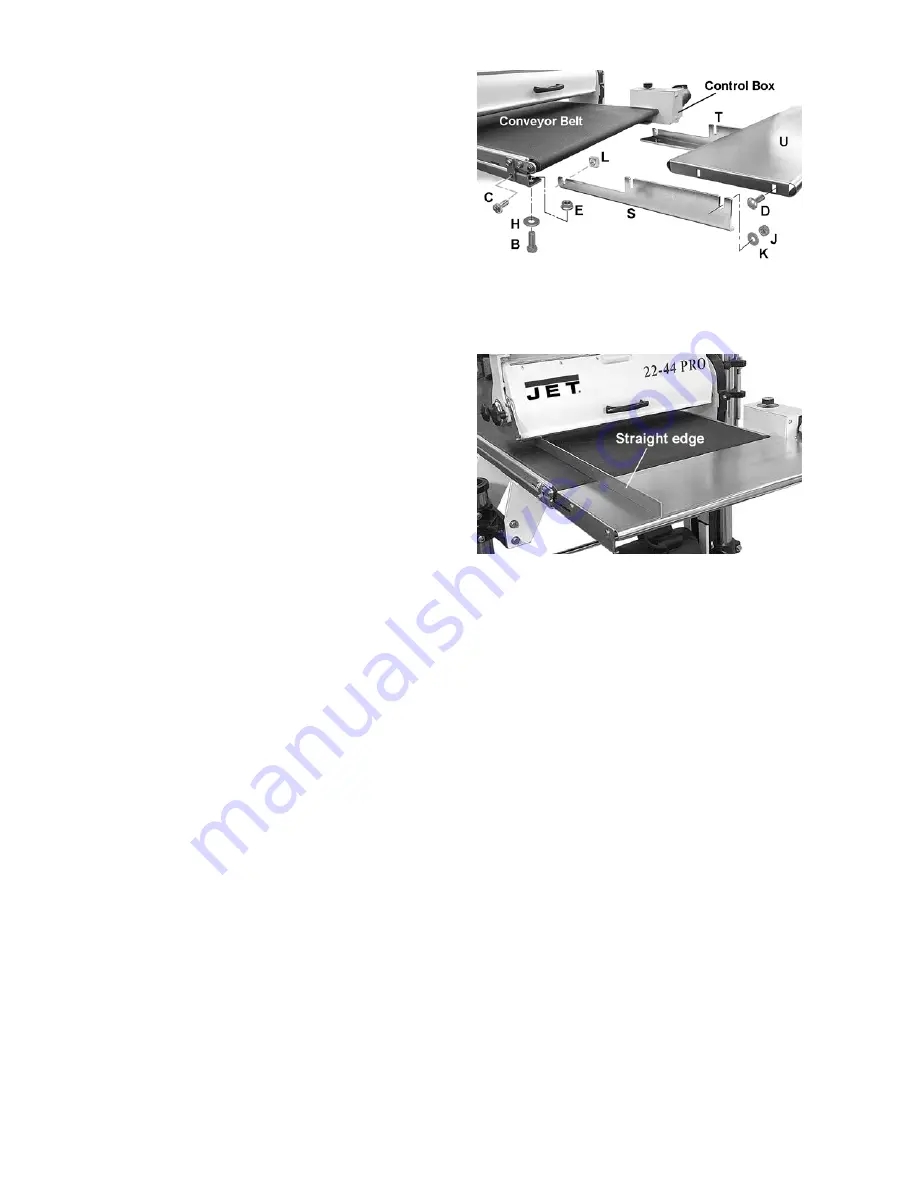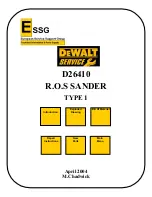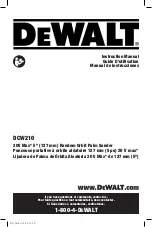
11
7. The
table
(U) should be positioned even with or
slightly below the
conveyor belt
surface. To
check position, place a level or
straightedge
near the left side of the
conveyor
and extending
out over the
table
, as shown in Figure 8. Raise
the
conveyor table
until the drum holds the
straightedge
in place, and adjust the infeed
table until it is even with or slightly below the
conveyor belt surface.
8. Place the straightedge near the the right side of
the conveyor table and repeat. Tighten all hex
nuts on the infeed table.
9. Mount
the
outfeed table
in the same manner as
described above.
Note:
Removal of existing screws on the rails
will not be necessary for the outfeed side.
Leveling the Sander
Proper leveling is important for getting the
maximum performance from your sander.
1. Place the unit where it will be used in the shop.
2. Mark the position of the legs on the floor with
tape so the sander can be returned to the same
position.
3. Place washers on the casters as needed to
shim up the legs.
Dust Collection
Dust collection is mandatory for a safe work
environment and extended abrasive life. The
sander is equipped with a 4” dust collection port at
the back of the dust cover. It is designed to be used
with standard 4” dust collection hose connected to
a high volume dust collector with a minimum
capacity of 600 CFM.
Using a shop vacuum is not recommended for this
machine, but if used it should be a 16 gallon or
larger canister type shop vacuum. This requires
converting the dust port down to 2-1/2”. An adapter
is available from your dealer (stock no. 80-2910) for
converting to the 2-1/2” hose. Do not reduce hose
size smaller than 2-1/2”. For best results, follow
recommendations of the dust collector
manufacturer.
Figure 7
Figure 8
Summary of Contents for 22-44 Pro-3
Page 35: ...35 Stand Assembly...
Page 37: ...37 Drum Head Assembly...












































